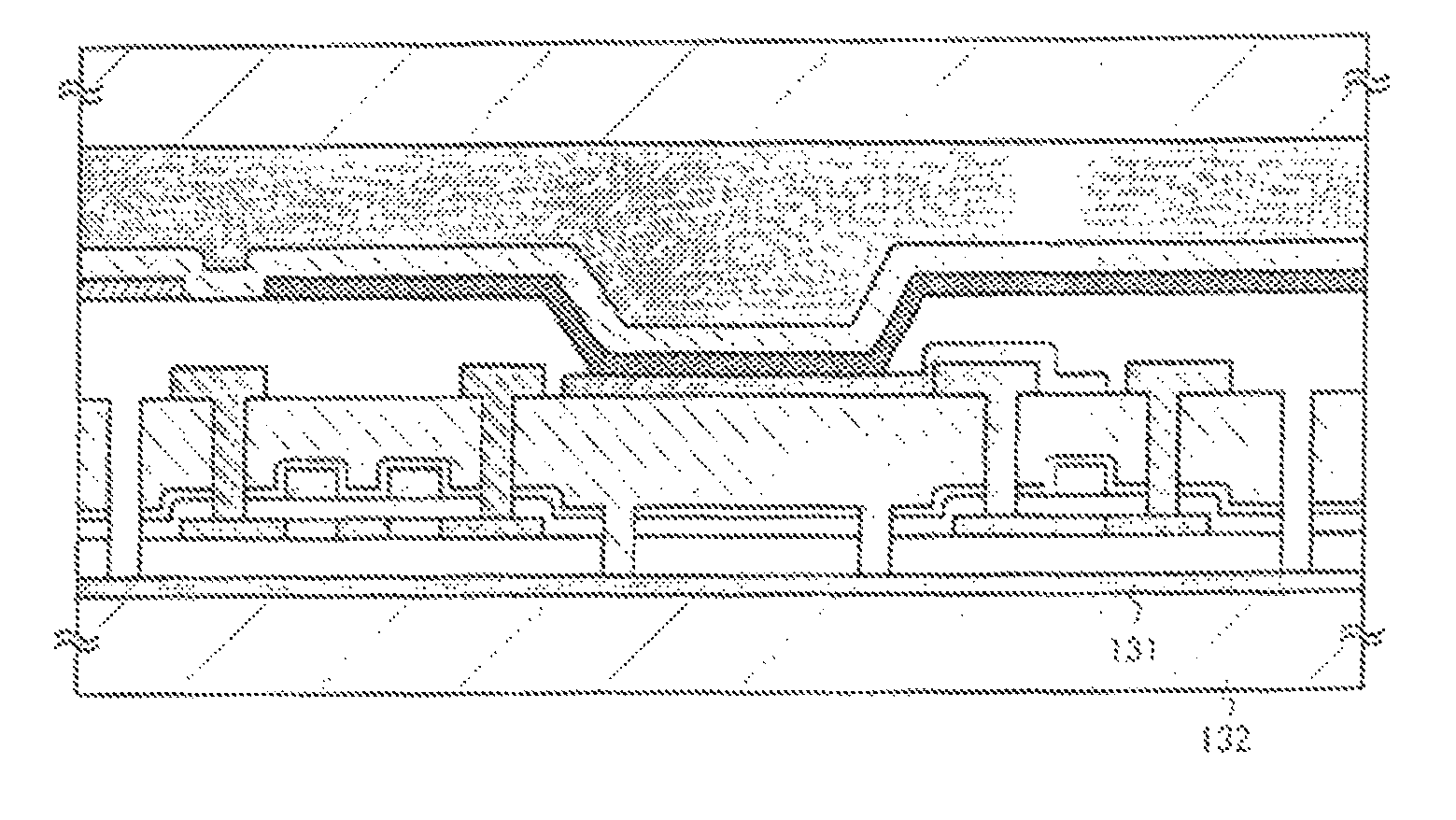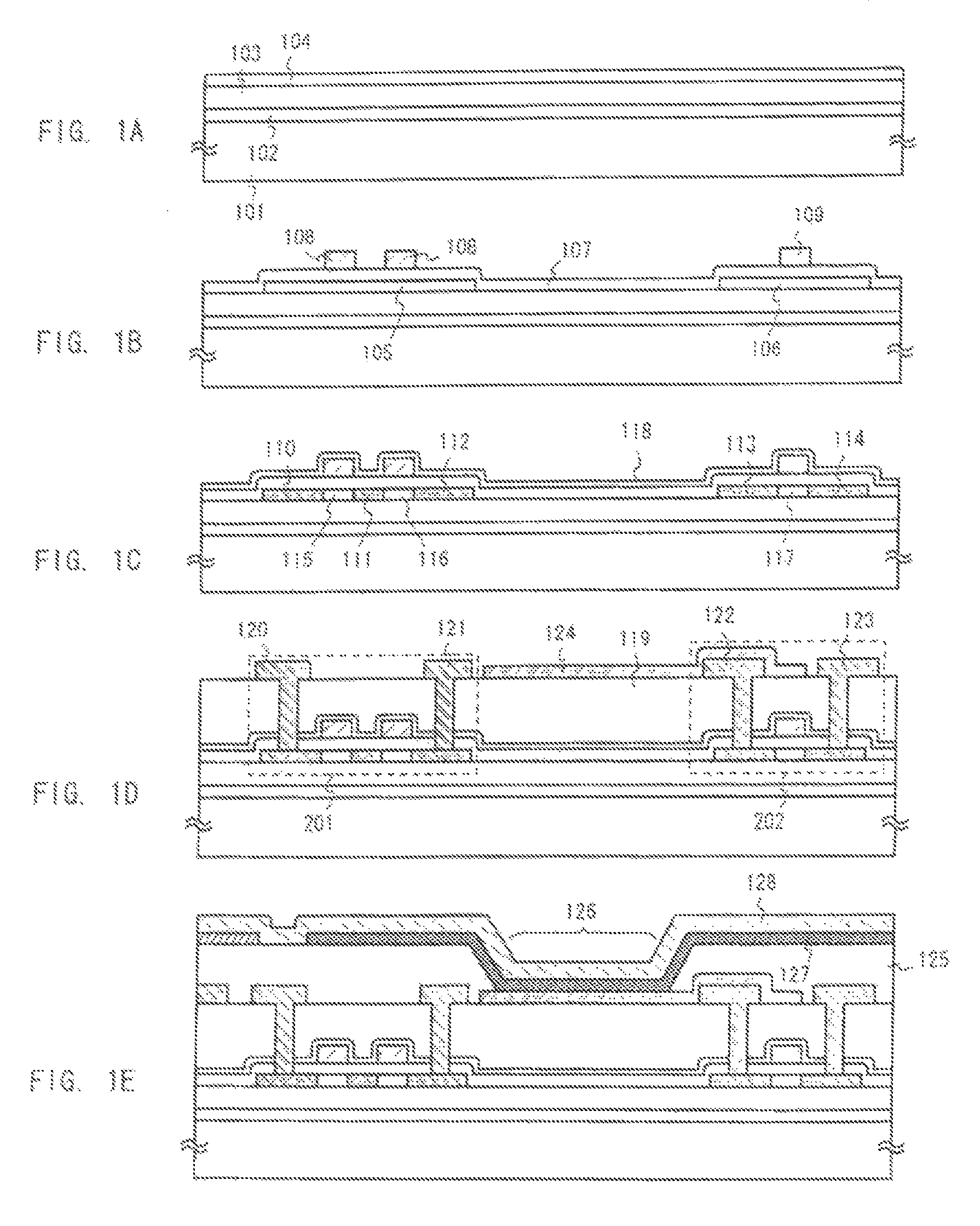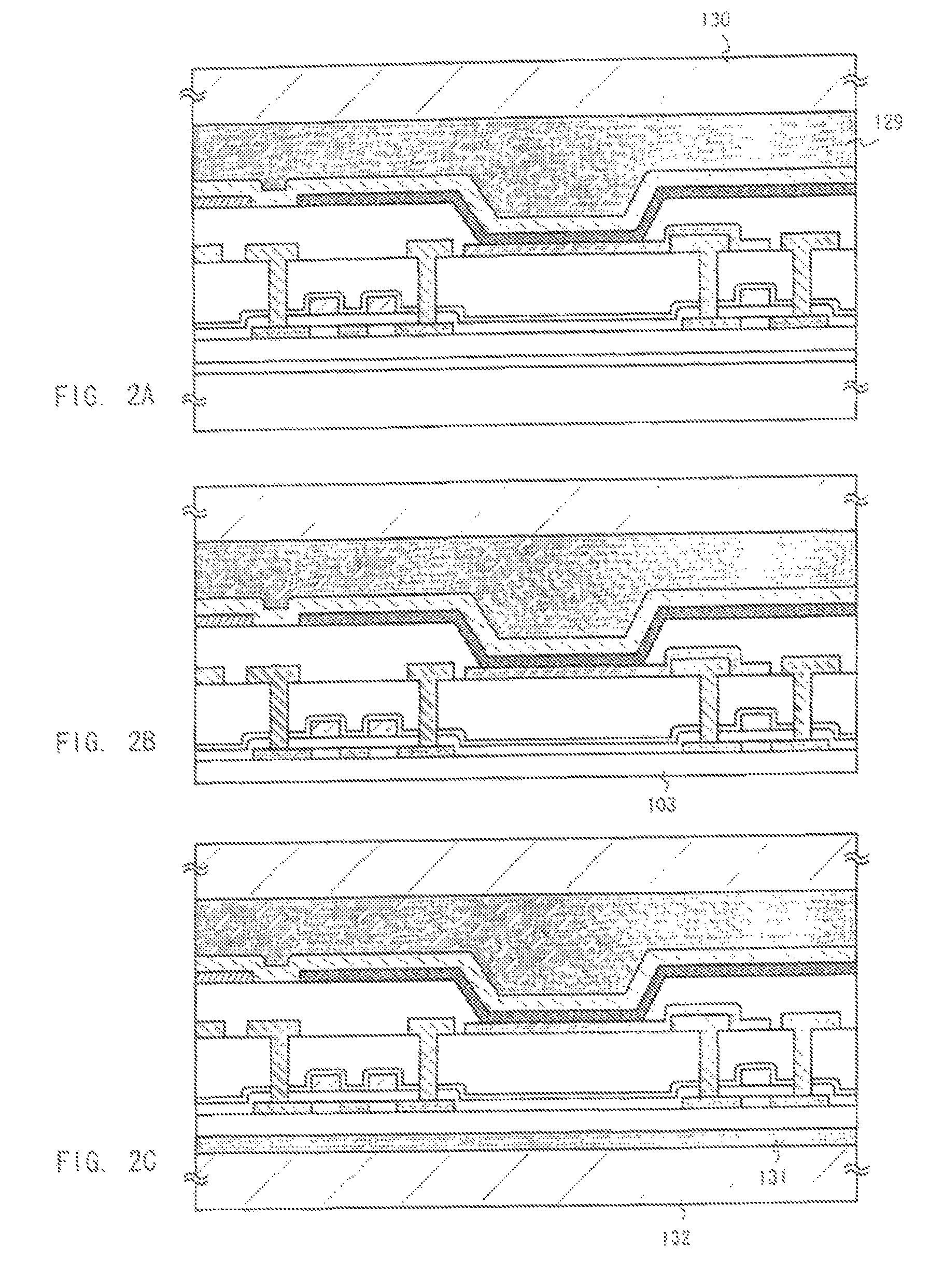Display device and method of manufacturing the same
a technology of a display device and a manufacturing method, which is applied in the direction of solid-state devices, layered products, chemistry apparatuses and processes, etc., can solve the problems of low heat resistance of plastic films, low temperature of a process, and poor electric characteristic of tft, so as to achieve low heat resistance
- Summary
- Abstract
- Description
- Claims
- Application Information
AI Technical Summary
Benefits of technology
Problems solved by technology
Method used
Image
Examples
embodiment 1
In Embodiment 1, an explanation will be made of an example of a case where an EL display device is manufacturing by a method that is different from the one in the embodiment mode. The state shown in FIG. 1C is first obtained in accordance with the embodiment mode of the present invention. Then, after forming a silicon nitride film 118, a resist 401 is formed thereon. With the resist 401 as a mask, the silicon nitride film 118, a gate insulating layer 107, an insulating layer 103, and a peeling layer 102 are sequentially etched to thereby form opening portions 402 and 403 to reach an element-forming substrate 101. (See FIG. 4A)
Next, as shown in FIG. 4B, a first interlayer insulating layer 404 comprising resin is formed after the resist 401 is removed. A 2 μm thick polyimide film is used as the first interlayer insulating layer 404 in Embodiment 1. At this point, the element-forming substrate 101 and the first interlayer insulating layer 404 are bonded to each other at bottom portions...
embodiment 2
In the embodiment mode or Embodiment 1 of the present invention, it is effective to employ any of the inventions disclosed in Japanese Patent Application Laid-open No. Hei 9-312260, Japanese Patent Application Laid-open Hei 10-247735, Japanese Patent Application Laid-open No. Hei 10-270363, and Japanese Patent Application Laid-open No. Hei 11-191628 by the present applicant for manufacturing processes up to the formation of the gate electrode.
All the techniques disclosed in the above-mentioned applications are techniques for forming a crystalline silicon film that has an extremely high crystallinity. Thus, TFTs having a very high performance may be formed by employing these techniques. Although heat treatment conducted at a temperature of 550° C. or more is included in any of these techniques, it becomes possible to use a low heat resistant plastic substrate as the element-forming substrate by employing the technique of the present invention.
It is to be noted that the constitution o...
embodiment 3
In Embodiment 3, an explanation will be made on an example of a case where the present invention is employed in a liquid crystal display device with reference to FIGS. 7A to 7C.
In FIG. 7A, reference symbol 701 denotes an element-forming substrate comprising glass, reference symbol 702 denotes a peeling layer comprising an amorphous silicon film, reference symbol 703 denotes an insulating layer comprising a silicon oxide nitride film, and a reference symbol 704 denotes a pixel TFT. The pixel TFT 704 is a P channel TFT that is manufactured in accordance with the processes explained in the embodiment mode. In Embodiment 3, the pixel TFT 704 will be used as a switching element for controlling a voltage applied to a liquid crystal. Further, reference symbol 705 denotes a pixel electrode formed from a transparent conductive film that is electrically connected to the pixel TFT 704.
The above described structure may be formed in accordance with the manufacturing processes that were explained...
PUM
| Property | Measurement | Unit |
|---|---|---|
| temperature | aaaaa | aaaaa |
| pressure | aaaaa | aaaaa |
| pressure | aaaaa | aaaaa |
Abstract
Description
Claims
Application Information
 Login to View More
Login to View More - R&D
- Intellectual Property
- Life Sciences
- Materials
- Tech Scout
- Unparalleled Data Quality
- Higher Quality Content
- 60% Fewer Hallucinations
Browse by: Latest US Patents, China's latest patents, Technical Efficacy Thesaurus, Application Domain, Technology Topic, Popular Technical Reports.
© 2025 PatSnap. All rights reserved.Legal|Privacy policy|Modern Slavery Act Transparency Statement|Sitemap|About US| Contact US: help@patsnap.com



